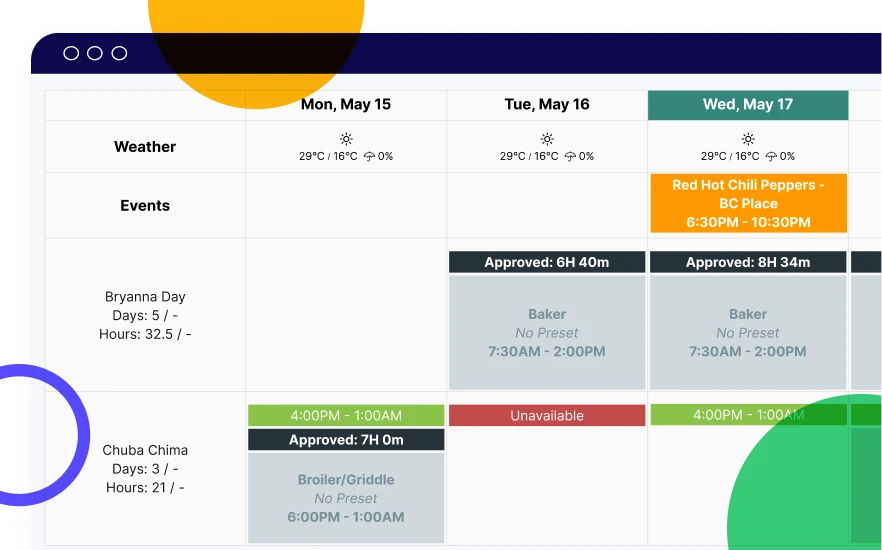In the bustling atmosphere of a busy restaurant, overlooking a time off request can quickly turn into a recipe for chaos. Unfilled shifts, disrupted schedules, and rising tempers may ensue as the kitchen or service staff hastily try to fill the gaps. Without an effective system, the restaurant environment can become toxic, disrupt operations, and impact overall business health.
A time off request is a formal communication asking permission to be absent from work for a specific period. This absence may be due to:
To facilitate leave requests, many companies use time-tracking software, while others opt for written submissions via email or a request book. In some cases (although not advised), a verbal notification suffices. Regardless of the method, a proper request typically includes:

The person in charge of approving a time off request depends on a company's size, structure, and time off policy. If it's a small or medium-sized business, the authority is typically the employer or the direct manager. For larger companies and enterprises, human resource (HR) personnel may handle all approvals.
Like scheduling, time off requests require a well-established system for employers and managers to make necessary adjustments. Here are 4 tips to best manage time off requests!
Clear communication is crucial to ensure everyone is on the same page. To achieve this, a well-defined time off policy must be implemented. This written guideline outlines the company's rules and regulations regarding time off.
The policy must adhere to the Fair Labor Standards Act, state requirements, and local laws. A clear time off policy should cover the following:
The time off policy should be discussed during the hiring process and must be reiterated to new hires. It's also a good practice to remind employees at the start of each year.
Overlapping requests for time off is inevitable, especially during the holidays. Without rules, tension may build between management and their employees — and even among co-workers. This can lead to an unhealthy work environment and low employee satisfaction.
To avoid these conflicts, define clear rules for time off requests. This way, employees understand why their request is approved or denied. In general, the overlapping time off request approach adheres to the following:

When it comes to time off requests, a usual complaint is favoritism. This may be unintentional, but it can affect teamwork and work culture. A rotating time off schedule is the antidote for this, as it cycles employees through different days and shifts. This carousel schedule ensures continuous coverage and fairness. It also helps maintain adequate staffing levels, which is critical for 24/7 operations or peak seasons. Moreover, it prevents resentment by giving everyone a shared responsibility and understanding different schedule challenges.
Having an organized structure is the key to effectively managing time off requests. A great solution for this is workforce management software, like Push, that automates and streamlines the process. It's better than a spreadsheet or a written record because it simplifies the process and securely stores all requests in one place. With Push, time off requests automatically sync with the scheduler, so that you don’t accidentally schedule someone on their requested day off.
With a cloud-based time tracking software like Push, employees no longer have to be in the office to make their requests. A time off request can be submitted on the Push app where managers can view and approve them, ensuring that time off requests are managed promptly and efficiently. Approved time off requests are then integrated with payroll for a more efficient and comprehensive system.

When managing time off requests, following your defined rules is essential to prevent discrepancies and ensure fairness. But despite setting limits, it's also important to approach the process with kindness. If you have to reject a request, make sure the reason is valid and deliver it compassionately to minimize potential upset.
To simplify time off management and keep abreast of all requests, using a reliable time tracking tool that automates the process is a big help. Book a demo to learn how Push can streamline time off requests, saving you ample time and money.
“In the labor numbers, we were reporting about a $300 to $400 difference than what we were getting through Push!”
-Tara Hardie, ZZA Hospitality Group, 16 locations





